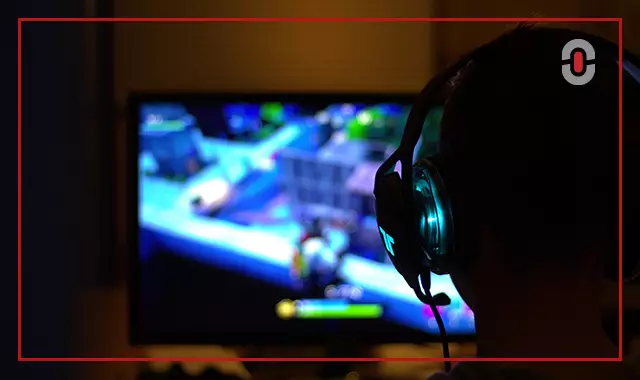AI Overview
| Category | Summary |
| Topic | The cultural and technical role of Japanese gaming voice acting (seiyū) and audio design. |
| Purpose | To show how voice acting and sound innovation shape storytelling, player immersion, and global influence. |
| Key Insight | Japanese games treat sound as emotion—seiyū artistry and advanced audio systems are cultural pillars that set them apart worldwide. |
| Best Use Case | Developers, localizers, and fans who want to understand why Japanese voice acting and soundscapes are central to the gaming experience. |
| Risk Warning | Direct translations often miss nuance; lip-sync mismatches and cultural honorifics are common pitfalls in localization. |
| Pro Tip | Always consider dual audio tracks and adaptive sound design to balance authenticity with global accessibility. |
Introduction
Japanese video games have always had a reputation for their emotional depth, creativity, and technical polish. Beyond visuals and gameplay mechanics, one of the most enduring aspects of Japanese gaming is its voice acting (声優 / seiyū) and audio design. These elements elevate games from simple entertainment to deeply immersive storytelling experiences.
In Japan, voice acting is a cultural phenomenon. It intertwines with anime, music, and pop culture, creating a unique ecosystem where players often follow games because of the voice actors involved. Similarly, audio innovation—from environmental soundscapes to adaptive music—has helped Japanese developers define what it means for a game to “sound alive.”
The Rise of Voice Acting in Japanese Games
In the early years of video games, hardware restrictions limited developers to basic sound effects and chiptunes. Dialogue was displayed as text, with players supplying the voices in their imagination. While iconic, this format limited narrative delivery.
The 1990s brought a revolution with the arrival of CD-ROM technology. Suddenly, developers had the storage capacity to include recorded voices and cinematic audio. This opened the door to hiring professional voice actors, many of whom were already active in anime.
Some landmark moments in this transition include:
- Tales of Phantasia (1995, Namco): Known as one of the first RPGs to feature substantial voiced dialogue, including an opening theme sung by a professional singer, which was groundbreaking at the time.
- Sakura Wars (1996, Sega): A hybrid of tactical RPG and dating sim, heavily reliant on voice acting to develop character relationships and narrative depth.
- Final Fantasy X (2001, Square Enix): The first fully voiced entry in the legendary series. While its English localization was controversial for its delivery, the Japanese version was praised for elevating the emotional storytelling.
These innovations shifted expectations: players began to demand rich vocal performances as part of the gaming experience. From this point onward, voice acting became central to the identity of Japanese RPGs, visual novels, and even action titles.
Seiyū as Brand Ambassadors
When a major game casts popular seiyū like Kana Hanazawa, Mamoru Miyano, or Yuki Kaji, it instantly gains recognition. Fans often follow their favorite voice actors across games, anime, and drama CDs. This gives developers a built-in marketing advantage: the seiyū themselves become part of the brand identity.
For example, Persona 5’s cast of seiyū is heavily tied to its success. The unique performances of Jun Fukuyama (as Joker) and Nana Mizuki (as Ann) shaped how players connected to the characters, influencing not only the game but also anime adaptations, concerts, and stage plays.
Performance Nuance and Style
Japanese voice acting places a strong emphasis on emotional fidelity. Unlike some Western games that aim for naturalistic performances, Japanese games often lean into expressive delivery that mirrors anime traditions. A battle cry in Tales of Symphonia or a heartfelt confession in Clannad is not just functional—it is heightened, theatrical, and designed to resonate deeply with the audience.
Moreover, the use of honorifics and speech patterns in Japanese dialogue adds cultural layers that cannot be directly translated. How a character speaks—formal, casual, archaic, or youthful—communicates social context and personality before the player even sees them in action.
Audio Direction and Localization Challenges
As Japanese games gained global popularity, localization became a major challenge. Translating text was one thing, but adapting spoken dialogue raised new issues.
Lip-Syncing and Timing
Many Japanese games animate mouth movements to match Japanese dialogue. When dubbed into English or other languages, mismatches in timing can be jarring. Some localizations adjust animation, while others prioritize performance over syncing.
Tone and Cultural Nuance
Japanese honorifics like -san, -kun, and -sama carry meanings that are difficult to replicate in English. Similarly, speech levels (formal vs. informal) often reflect character dynamics that can get lost in translation. For example, a character switching from watashi to ore in Japanese signals intimacy or a shift in personality, but in English, both simply translate to “I.”
Fan Preferences
A significant portion of international fans prefer original Japanese audio with subtitles, valuing the authenticity of seiyū performances. This has led to a common practice of including dual audio options. Games such as Persona 5 Royal and Fire Emblem: Three Houses allow players to choose, reflecting how important original voice tracks are to the global gaming community.
Soundscapes and Audio Innovation
Beyond voice acting, Japanese developers are also masters of audio world-building. They recognize that sound is an essential storytelling tool.
Environmental Audio
Games like The Legend of Zelda: Breath of the Wild showcase this brilliantly. The rustle of leaves, chirping of distant birds, and sound of footsteps on different terrain create a living world. Similarly, Monster Hunter titles rely on detailed soundscapes where each monster has distinctive roars, footsteps, and attack sounds that help players anticipate behavior.
Interactive and Rhythm-Based Audio
Japan also pioneered rhythm-based gameplay, where sound and player action are inseparable. Series like Dance Dance Revolution, Taiko no Tatsujin, and Hatsune Miku: Project DIVA demonstrate how audio can be the primary mechanic rather than just background.
Adaptive Music Systems
Titles such as Nier: Automata and Final Fantasy XV employ adaptive music, where tracks change based on location, combat state, or narrative progression. In Nier: Automata, for example, some songs have multiple layers that fade in and out depending on the player’s actions, creating a seamless emotional flow.
The Global Influence of Japanese Game Audio
Japanese audio practices have shaped international game design. Developers worldwide now recognize the importance of high-quality voice acting and immersive audio.

- Western RPGs like Mass Effect and The Witcher 3 drew on lessons learned from Japanese narrative-driven games, emphasizing character voices as central to storytelling.
- Indie developers inspired by visual novels now frequently incorporate voice acting, even with limited budgets.
- The global popularity of Japanese voice actors has led to more non-Japanese games offering Japanese audio tracks, as seen in Genshin Impact.
This global crossover reflects how Japanese seiyū culture has become an exportable art form, appealing to players regardless of language barriers.
Looking Ahead: The Future of Japanese Gaming Voice Acting and Audio
As technology advances, the role of audio in games will continue to expand. Several trends are already shaping the future:
- AI-Assisted Voice Tools: While not intended to replace seiyū, AI could be used for rapid prototyping or adaptive dialogue generation in open-world games.
- 3D and Spatial Audio: With VR and AR technologies, immersive soundscapes will play an even greater role in how players perceive digital environments.
- Interactive Voice Acting: Developers are experimenting with branching performances where tone, pacing, and even vocabulary shift based on player decisions in real time.
- Cross-Media Integration: Expect to see more collaborations where seiyū extend roles into VTuber projects, live concerts, and virtual performances.
What will remain constant, however, is the emotional power of human voice. Technology may evolve, but seiyū artistry is likely to remain at the heart of Japanese gaming.
Conclusion
Japanese gaming voice acting and audio are cultural pillars that shape the way players connect with characters and worlds. From the early days of CD-ROM innovation to today’s global franchises, the contributions of seiyū and sound designers have elevated Japanese games into a unique art form.
Whether it’s a heartfelt confession in a visual novel, a monster’s roar in a hunting game, or the adaptive soundtrack of an RPG, Japanese game audio consistently proves one thing: sound is emotion, and emotion is what makes games unforgettable.
As the industry moves forward, the combination of tradition and innovation in Japanese audio will continue to inspire not just Japan, but the global gaming community.
